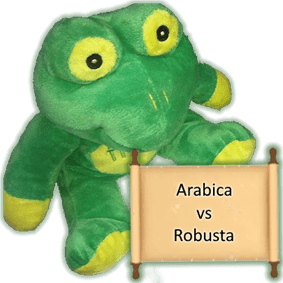As an extension of the Mexican trip, we joined a few other roasters to a trip to Finca Las Nieves. The coffee farm is located in a cloud forest in the middle of nowhere in the Sierra Madre Oriental. Nieves means snow in Spanish.
A minibus was rented by Caravela and two other roasters and Frida Caravela’s Mexican Q-grader (as a translator) were taken to the farm. We have actually bought coffee from this farm and had sold it in 2015. It was a small lot that won CoE. So we were interested in visiting.
The farm was just over 2 hours outside Puerto Escondido where the Aromas auction had been.
Once we got there, it became clear that language was a big issue. Luckily once we returned to Puerto Escondido, I bumped into Gustav, who is one of three owners, and he corrected some of the facts.
The Farm
The farm had been abandoned when Gustav and his three partners bought the farm. Very few of the original trees are still productive, and so a long term plan was put in place. The basics of it were to use the biodiversity of the existing farm, which is essentially mainly indigenous forest.
Stats:
- Farm size: 200 ha – of which 60 is coffee.
- Latitude: 16°10′ N
- Year 2018 production was 300 bags, this year they are estimating 350 bags (60kg per bag)
- All processing is done on the farm, and milling is performed at Puerto Escondido, where they have a coffee shop of the same name.
- All coffee is under a canopy of the natural and diverse forest they want to plant in low density with a number of cultivars.
Almost all the coffee produced on the farm is used by the coffee shop in town, with only a few separated unique lots being offered to auctions and competitions to promote the name of the farm. Last year the farm came first in Aromas.
Felix is the farm manager, he already had another tour booked so could not take us. Instead, his assistant did with his trusty panga, which acted more as a walking stick than anything else.
Coffee on the farm
Since the farm is a natural forest, they keep all things natural. They use copper to spray the plants to prevent Royo (coffee rust) and Borca (bora) – you can read more about these on our post on rust, borca and fumagina…
First, we visited their nursery. Here all the seedling are grown, and when strong enough (between 9 and 14 months old typically) they are then planted in designated areas in the forest. Once we visited the nursery, we took a gentle 3 km hike through the farm, starting at the processing area. We climbed around 150m hiking through what appears to be a totally natural and sparsely planted forest, past the waterfall called Las Nieves and then returning to the drying patio. During the hike, we saw several cultivars including Maragogype, Pacamara, SL28, Typica and Geisha.
Video of what we saw
Harvest, Processes and Worms
Commentary
The visit to this farm reminded me of Ethiopia. The natural forest is the dominant feature of the farm. Coffee trees are more or less left to grow naturally in a sparsely designed layout. They seem to have adopted a methodology of only interfering when required. Like spraying with copper 30 days before the blossoming is expected and using their own compost and worm juice. While the trees looked healthy, their produciton seemed quite low, especially in comparison to what we saw at Caravela’s Belgravia textbook farm.
You can read more about the farm and actually stay there, read more on glamping.com.


